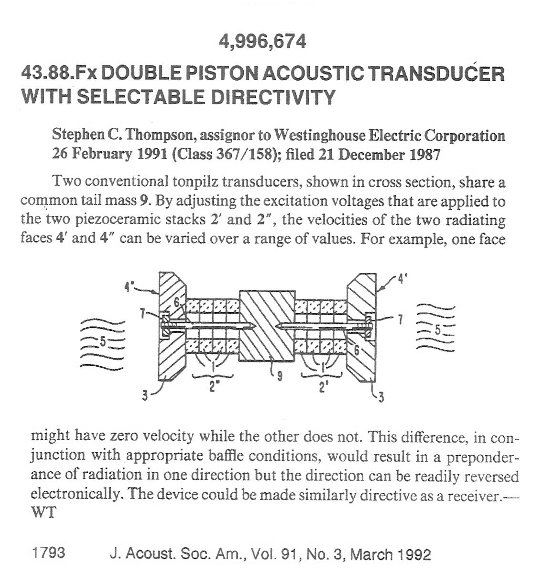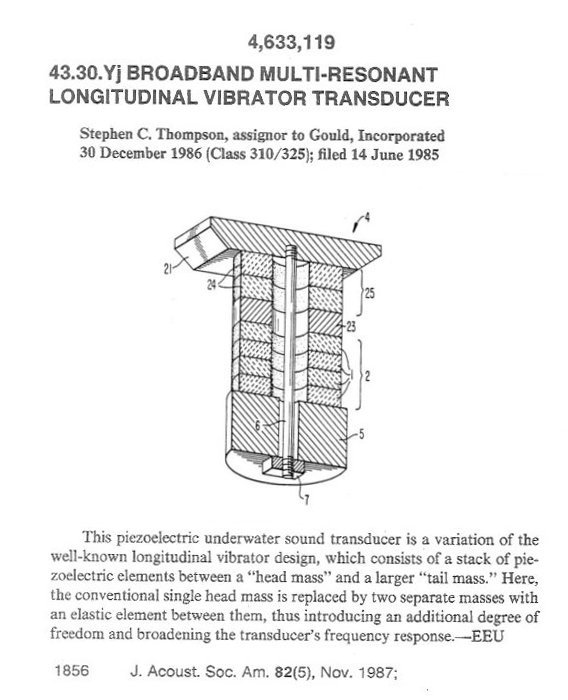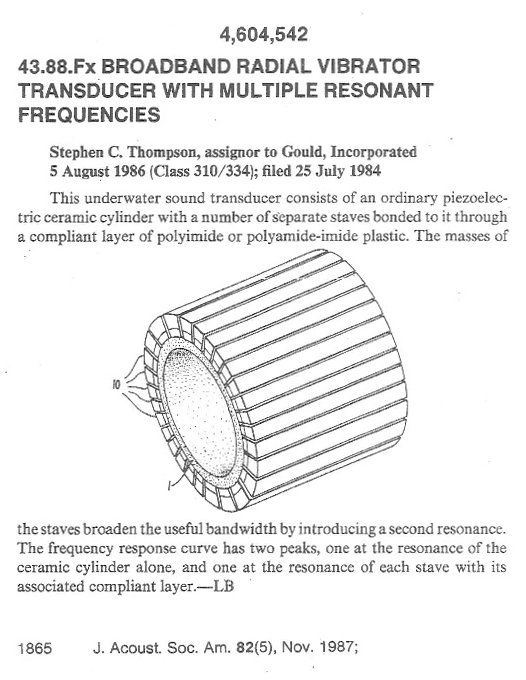The following patents have been awarded to date on my work. The patent summaries below are reviews that were published in the Journal of the Acoustical Society of America, used with permission.
 8,385,583 Stephen C. Thompson, "Methods and Apparatus for Reduced Distortion Balanced Armature Devices, 26 February, 2013.
8,385,583 Stephen C. Thompson, "Methods and Apparatus for Reduced Distortion Balanced Armature Devices, 26 February, 2013.
7,415,125 Daniel M. Warren, Stephen C. Thompson and David E. Schafer, "Apparatus and Method for Creating Acoustic Energy in a Receriver Assembly with Improved Diaphragms-linkage Arrangement," 19 August 2008.
7,336,797 Stephen C. Thompson, David E. Schafer and Daniel M. Warren, "Apparatus and Method for Generating Acoustic Energy in a Receiver Assembly," 26 February 2008.
7,113,604 Stephen C. Thompson, "Apparatus and Method for Matching the Response of Microphones in Magnitude and Phase," 26 September 2006.
7,065,220 Stephen C. Thompson, "Microphone Array having a Second Order Pattern," 20 June 2006.
6,654,468 Stephen C. Thompson, "Apparatus and Method for Matching the Response of Microphones in Magnitude and Phase," 25 November 2003.
4,996,674 Stephen C. Thompson, "Double Piston Acoustic Transducer with Selectable Directivity," 26 February 1991.
4,633,119 Stephen C. Thompson, "Broadband Multi-Resonant Longitudinal Transducer," 30 December 1986.
4,604,542 Stephen C. Thompson, "Broadband Radial Vibrator Transducer with Multiple Resonant Frequencies," 5 August 1986.
U.S. Patent No. 8,385,583

U.S. Patent No. 7,415,125
A prior art balanced armature speaker assembly of the kind used in hearing aids (also often called a receiver assembly) consists of a motor assembly that includes an armature (142a) that vibrates between two magnets (134) and drives a rod (144) that normally directly drives a diaphragm that radiates sound. In this invention, the drive rod couples through a link assembly that changes the direction and/or magnitude of the oscillation. The opposite end of the link assembly may drive a diaphragm, or a movable portion of the transducer housing to directly radiate sound.

U.S. Patent No. 7,336,797

U.S. Patent No. 7,113,604

U.S. Patent No. 7,065,220

U.S. Patent No. 6,654,468

U.S. Patent No. 4,996,674

U.S. Patent No. 4,633,119

U.S. Patent No. 4,604,542

